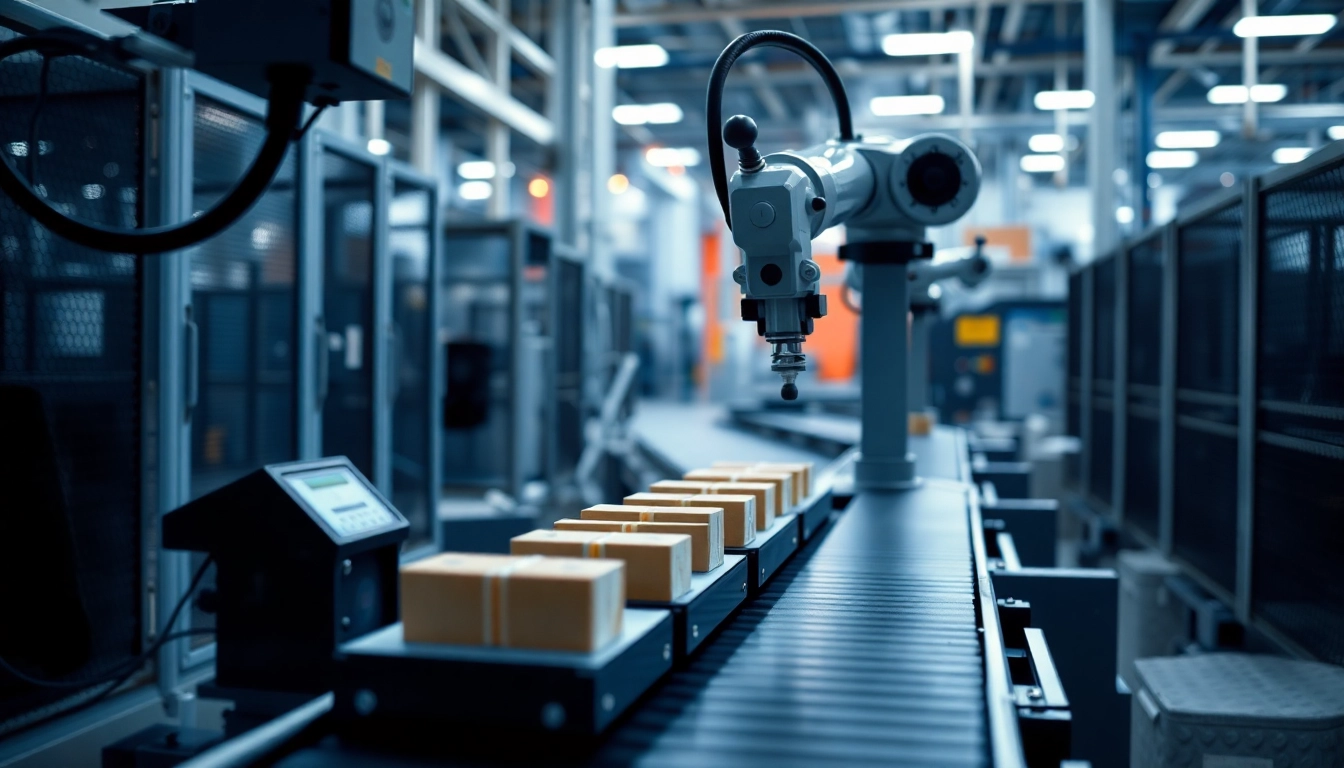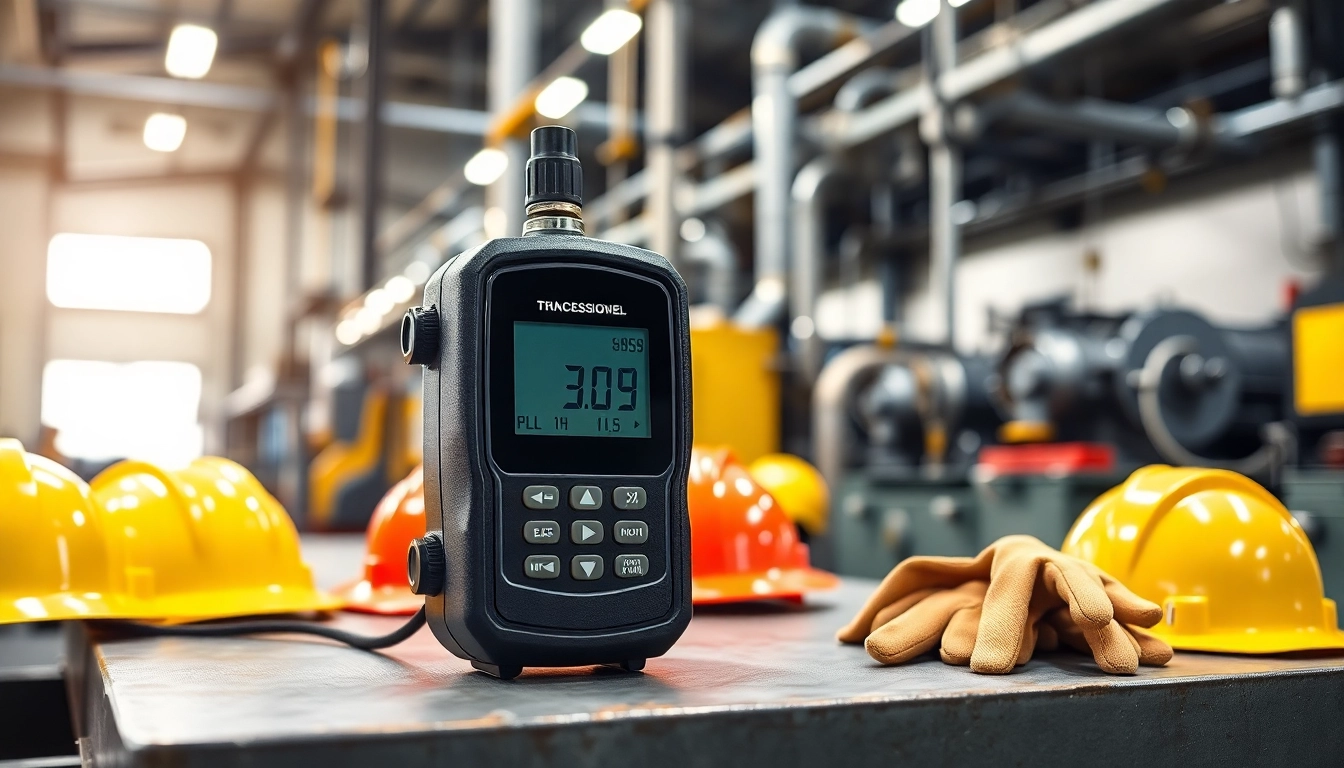What is Machine Vision?
Definition and Introduction to Machine Vision
Machine vision refers to a specialized technology that allows machines and systems to interpret and act upon visual information. Employing a combination of digital cameras, optics, and sophisticated algorithms, machine vision systems can perform tasks such as inspection, guidance, and navigation automatically. This capability enables machines to perform complex tasks in real-time, thereby reducing the reliance on human intervention and increasing the speed and accuracy of operations. To grasp the full scope of machine vision, it is essential to understand its core components, working principles, and the various applications it encompasses in both industrial and commercial settings. For a more detailed overview, you may explore machine vision.
Core Components of Machine Vision Systems
Machine vision systems typically comprise three primary components: imaging devices, processing hardware, and application-specific software. Each of these components plays a critical role in the overall functionality of the system.
- Imaging Devices: Cameras and sensors are at the forefront, capturing visual data. This data can vary in format—ranging from 1D to 3D images—depending on the application. Various technologies such as CCD (Charge-Coupled Device) and CMOS (Complementary Metal-Oxide-Semiconductor) sensors are common in these devices.
- Processing Hardware: The captured images are transmitted to processing units, where they are analyzed and interpreted. These processing units can range from simple microcontrollers to advanced GPU-based systems capable of high-speed image analysis.
- Application-Specific Software: This software performs the critical task of applying algorithms to extract useful information from the images. Machine learning and artificial intelligence are increasingly being incorporated in this sphere to enhance performance and accuracy.
How Machine Vision Differs from Computer Vision
While often used interchangeably, machine vision and computer vision encompass distinct functionalities. Machine vision is primarily focused on automation in industrial settings, facilitating tasks such as quality control, defect detection, and process monitoring. In contrast, computer vision is a broader field encompassing patterns and the understanding of visual information across various applications, including facial recognition, autonomous vehicles, and more. The distinction lies in the primary objectives and the context of deployment. Machine vision is geared towards tight integration with manufacturing processes, while computer vision may emphasize cognitive tasks and analysis.
Applications of Machine Vision in Industry
Quality Control and Inspection
One of the most significant applications of machine vision is in quality control and inspection processes. Automated systems equipped with machine vision technology can inspect products for defects, measure physical characteristics, and ensure compliance with specified standards.
For instance, in the automotive industry, sensors can detect minute defects in car body panels, ensuring that quality standards are maintained before products reach the market. By integrating machine vision into these processes, manufacturers can significantly reduce error rates and improve product consistency, which is crucial in today’s competitive environment.
Robotics and Automation
Machine vision facilitates the integration of advanced robotics, allowing for greater autonomy and efficiency in manufacturing environments. Robots equipped with vision systems can identify and name objects within their workspace, enabling them to carry out operations like picking, placing, and sorting efficiently.
For instance, in warehouses, automated picking systems use machine vision to identify products and navigate spaces, reducing the need for manual labor while significantly improving operational speed and accuracy. This integration not only enhances productivity but also minimizes human injuries associated with manual handling.
Logistics and Supply Chain Optimization
In logistics, machine vision plays a critical role in tracking shipments and managing inventory. Systems equipped with barcode scanners, OCR (Optical Character Recognition), and RFID (Radio-Frequency Identification) can read data in real-time, allowing for enhanced accuracy in inventory tracking and management.
By facilitating automated package tracking and error detection during loading and unloading processes, machine vision technology streamlines supply chain operations. This results in timely deliveries, reduced operational costs, and improved customer satisfaction through increased transparency and communication.
Benefits of Implementing Machine Vision
Increased Efficiency and Accuracy
Implementing machine vision technology serves to enhance both efficiency and accuracy within manufacturing and quality control processes. Automated visual inspections can operate continuously and at a speed far exceeding human capability. This not only ensures quicker production rates but also results in reduced units of defective products exiting the line. In a pivotal study, organizations reported up to 50% decreases in error rates following machine vision implementation.
Cost Reduction in Production
Integrating machine vision systems into production lines can lead to significant cost savings. By minimizing errors, reducing labor costs associated with manual inspections, and decreasing material wastage due to defects, companies can realize lower operational expenses. Furthermore, the initial investment in machine vision technology often pays for itself within a short time frame, as the increased efficiency leads to higher outputs and profits.
Enhanced Data Collection and Analytics
Machine vision systems are not solely about capturing images; they provide valuable data analytics that can be leveraged for improving processes. By analyzing visual data captured during the inspection phase, organizations can derive actionable insights regarding production trends, defect types, and overall equipment effectiveness. This data can inform future production strategies and quality enhancements, leading to continuous improvement across operations.
Challenges and Limitations of Machine Vision
Technical and Integration Challenges
Despite its myriad benefits, the integration of machine vision systems is not without challenges. Technical issues such as configuration difficulties, system compatibility with legacy equipment, and the need for specialized knowledge and training can present significant hurdles. Businesses must ensure that they have the necessary infrastructure in place and may incur additional costs for integration and maintenance.
Cultural Resistance in Adoption
Understanding and overcoming cultural resistance within organizations is crucial for the successful adoption of machine vision technologies. Employees may feel threatened by automation or skeptical about its reliability compared to traditional methods. Effective change management, regular communication, and employee training programs can help alleviate these concerns and foster acceptance of new technologies.
Data Privacy and Security Concerns
As machine vision systems increasingly rely on vast amounts of data—much of which may be sensitive—organizations need to address potential data privacy and security risks. Implementing robust cybersecurity protocols and ensuring compliance with legal standards are essential components in the deployment of machine vision systems to protect both the organization and its customers.
The Future of Machine Vision Technology
Emerging Trends and Innovations
The field of machine vision is constantly evolving. Several trends currently shape its future, notably the increasing integration of artificial intelligence and machine learning capabilities into vision systems. AI-enhanced algorithms can further improve the accuracy of inspections and allow systems to learn from previous experiences, thus adapting to changes in production more autonomously.
Furthermore, advancements in camera and sensor technologies, such as hyperspectral imaging and 3D vision systems, will provide even more robust capabilities for complex tasks in demanding environments.
Impact of Artificial Intelligence on Machine Vision
Artificial intelligence (AI) holds the potential to revolutionize machine vision by improving image processing and enabling deeper insights from visual data. With the ability to analyze large amounts of data quickly and interpret complex visual patterns, AI can enhance traditional machine vision’s effectiveness, especially in areas requiring nuanced decision-making like defect detection and classification tasks.
As AI technology continues to advance, we can expect increasingly intelligent machine vision systems capable of performing more sophisticated tasks autonomously, revolutionizing industries from manufacturing to healthcare.
Forecasting the Market Growth and Opportunities
The machine vision market has been experiencing significant growth, and this trend is projected to continue. Analysts predict that the industry will compound at a rate of approximately 8-15% over the next several years. Factors driving this growth include the global demand for automation, the increasing requirement for quality control, and the expansion of advanced manufacturing practices.
Opportunities in new markets, particularly in sectors such as pharmaceuticals, food processing, and logistics, will drive further innovation and investment in machine vision technologies. Companies looking to adopt this technology stand to benefit from not only improved efficiency but also enhanced competitiveness in an increasingly technology-driven marketplace.



